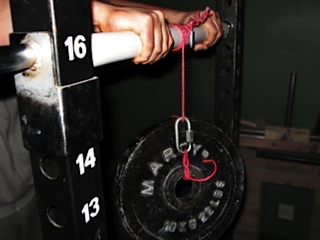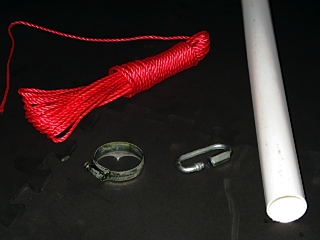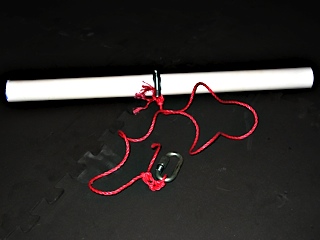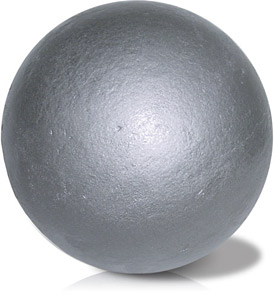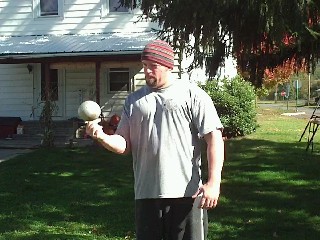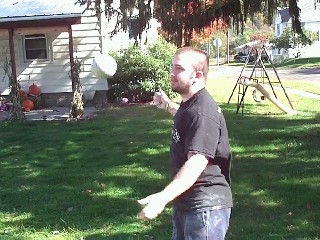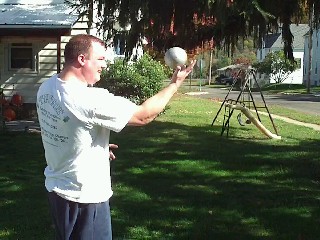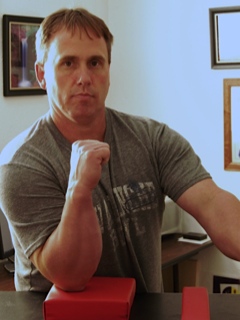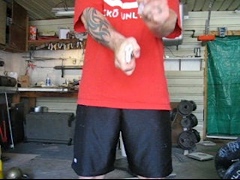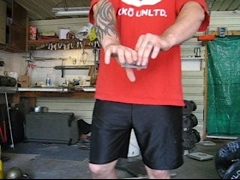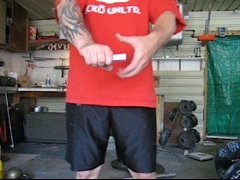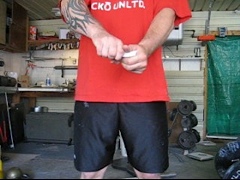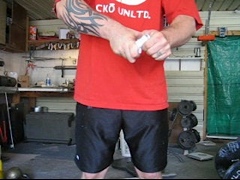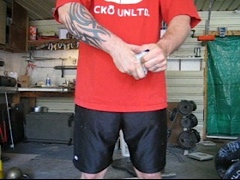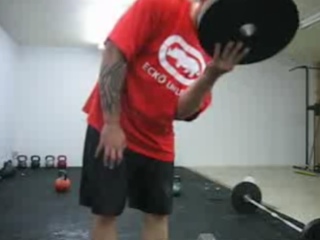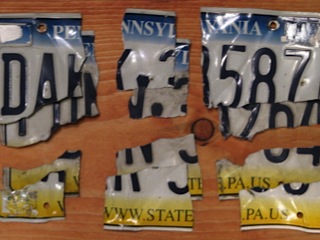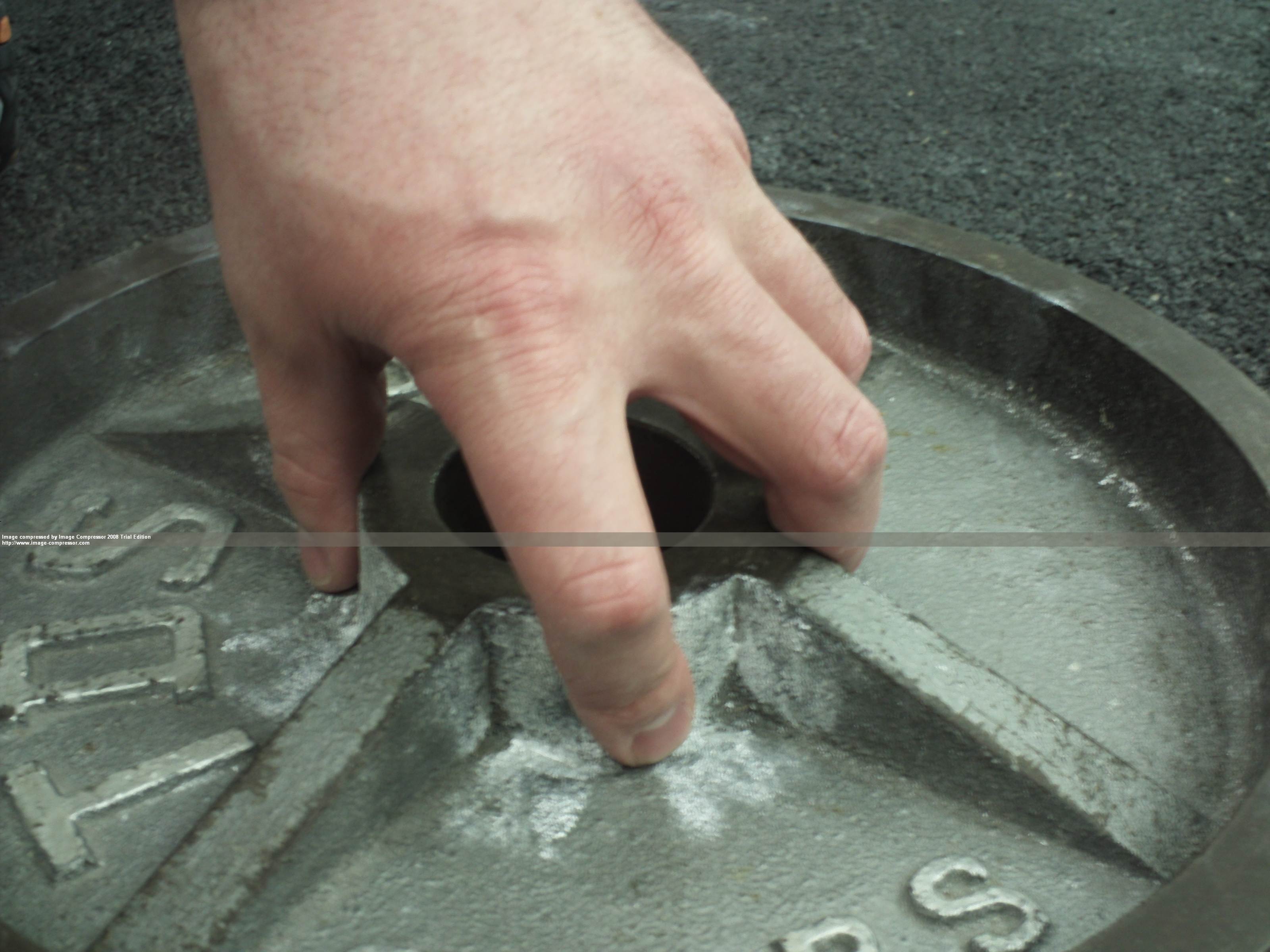
Before we get into too much detail about the many types of hubs that exist, it is important to understand a few things about hub lifting. Since this is a form of pinch grip training, it focuses on the development and display of thumb strength - the strength of the thumb will be the limiting factor in completing a hub lift. It is said that you have fully lifted a hub when you pinch the plate or other hub device and then lift it so that you stand in a fully upright position. Breaking the object off the floor only slightly or pulling it a few inches from the floor does not constitute a full lift. You must be able to control it long enough to reach the locked out position.
While many grip strength feats are easier for those with larger hands to perform, hub lifting might just be one of the feats that is easier for the smaller handed athlete to perform. I believe this to be so because the smaller handed individual is able to grasp the hub implement closer to the center of the hand. When a larger handed individual takes a grip on a hub, much of the hand will fail to come in contact with any of the gripping surface of the hub, so leverage and mechanical advantage is decreased. This bottoming out effect is caused by the fingertips hitting against the flat surface of the plate.
